 W
WGeorgia was one of the original seven slave states that formed the Confederate States of America in February 1861, triggering the U.S. Civil War. The state governor, Democrat Joseph E. Brown, wanted locally raised troops to be used only for the defence of Georgia, in defiance of Confederate president Jefferson Davis, who wanted to deploy them on other battlefronts. When the Union blockade prevented Georgia from exporting its plentiful cotton in exchange for key imports, Brown ordered farmers to grow food instead, but the breakdown of transport systems led to desperate shortages.
 W
WThe Army of the Tennessee was a Union army in the Western Theater of the American Civil War, named for the Tennessee River.
 W
WAtlanta was a casemate ironclad that served in the Confederate and Union Navies during the American Civil War. She was converted from a British-built blockade runner named Fingal by the Confederacy after she made one run to Savannah, Georgia. After several failed attempts to attack Union blockaders, the ship was captured by two Union monitors in 1863 when she ran aground. Atlanta was floated off, repaired, and rearmed, serving in the Union Navy for the rest of the war. She spent most of her time deployed on the James River supporting Union forces there. The ship was decommissioned in 1865 and placed in reserve. Several years after the end of the war, Atlanta was sold to Haiti, but was lost at sea in December 1869 on her delivery voyage.
 W
WThe city of Atlanta, Georgia, in Fulton County, was an important rail and commercial center during the American Civil War. Although relatively small in population, the city became a critical point of contention during the Atlanta Campaign in 1864 when a powerful Union Army approached from Union-held Tennessee. The fall of Atlanta was a critical point in the Civil War, giving the North more confidence, and leading to the re-election of President Abraham Lincoln and the eventual surrender of the Confederacy. The capture of the "Gate City of the South" was especially important for Lincoln as he was in a contentious election campaign against the Democratic opponent George B. McClellan.
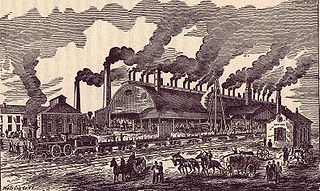 W
WThe Atlanta Rolling Mill was constructed in 1858 by Lewis Schofield and James Blake and soon after, Schofield and William Markham took it over and transformed it into the South's second most productive rolling mill, after the Tredegar Iron Works in Richmond, Virginia.
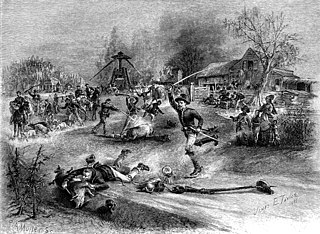 W
WBummers was a nickname applied to foragers of Maj. Gen. William Tecumseh Sherman's Union army during its March to the Sea and north through South Carolina and North Carolina during the American Civil War.
 W
WCSS Chattahoochee was a twin-screw steam powered gunboat built at Saffold, Georgia; she was christened for the river upon which she was built. The gunboat entered Confederate States Navy service in February 1863.
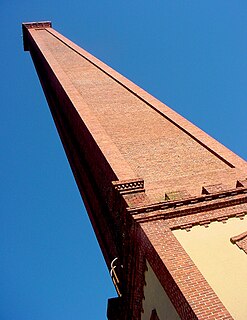 W
WThe Confederate Powderworks was a gunpowder factory during the American Civil War, the only permanent structures completed by the Confederate States of America. Colonel George Washington Rains chose the old United States Arsenal site between the Canal and Savannah River in Augusta, Georgia, as a secure inland location with good rail and water connections.
 W
WFort Barrington, briefly renamed Fort Howe after its capture, was a mid-18th-century frontier fort. It was used and garrisoned for several conflicts, including between the British, Spanish, and Native Americans; during the American Revolution; and during the American Civil War. In the years following, much of the original site has been destroyed by river action. Despite this, it was added to the National Register of Historic Places on September 27, 1972, and is currently held as part of a hunting and fishing club. No archaeological work other than ground reconnaissance has been done.
 W
WFort McAllister State Park is a 1,725 acres (698 ha) Georgia state park located near Keller and Richmond Hill in south Bryan County, Georgia and on the south bank of the Ogeechee River. It is roughly ten miles south of Savannah. The park is home to Fort McAllister, the best-preserved earthwork fortification of the Confederacy. Though the earthworks were attacked unsuccessfully seven times by Union soldiers, it did not fall until it was taken by General Sherman in 1864 during his March to the Sea. The park, located on the coast, is nestled among giant live oaks and a large salt marsh. In addition, the park contains a museum specializing in Civil War artifacts. The fort was added to the National Register of Historic Places in 1970.
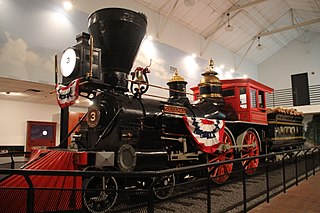 W
WWestern & Atlantic Railroad #3 General is a 4-4-0 "American" type steam locomotive built in 1855 by the Rogers, Ketchum & Grosvenor in Paterson, New Jersey for the Western & Atlantic Railroad, best known as the engine stolen by Union spies in the Great Locomotive Chase, an attempt to cripple the Confederate rail network during the American Civil War. Today, the locomotive is preserved at the Southern Museum of Civil War and Locomotive History in Kennesaw, Georgia, and is listed on the National Register of Historic Places.
 W
WCSS Georgia, also known as State of Georgia and Ladies' Ram, was an ironclad warship built in Savannah, Georgia in 1862 during the American Civil War. The Ladies' Gunboat Association raised $115,000 for her construction to defend the port city of Savannah.
 W
WCSS Georgia was a screw steamer of the Confederate States Navy, acquired in 1863, and captured by the Union Navy in 1864.
 W
W"Goober Peas" is a traditional folk song probably originating in the Southern United States. It was popular with Confederate soldiers during the American Civil War, and is still sung frequently in the South to this day. It has been recorded and sung by scores of artists, including Burl Ives, Tennessee Ernie Ford, Rusty Draper and The Kingston Trio.
 W
WThe Great Locomotive Chase is a 1956 American adventure film produced by Walt Disney Productions and based on the real Great Locomotive Chase that occurred in 1862 during the American Civil War. Filmed in CinemaScope and in color, the film stars Fess Parker as James J. Andrews, the leader of a group of Union soldiers from various Ohio regiments who volunteered to go behind Confederate lines in civilian clothes, steal a Confederate train north of Atlanta, and drive it back to Union lines in Tennessee, tearing up railroad tracks and destroying bridges and telegraph lines along the way.
 W
WLeroy Wiley Gresham was born in Macon, Georgia, and left behind one of the most remarkable and important diaries ever published. The seven journals, edited and annotated by Janet E. Croon, were published June 1, 2018 by Savas Beatie under the title The War Outside My Window: The Civil War Journals of LeRoy Wiley Gresham, 1860-1865. The book includes the tagline: A remarkable account of the collapse of the Old South, and the final years of a privileged but afflicted life.
 W
WU.S. Route 27 (US 27) is a 356.088-mile-long (573.068 km) U.S. Highway in the U.S. state of Georgia. It travels south-to-north through the western part of the state near the Alabama state line. The whole route is Governor's Road Improvement Program (GRIP) corridor EDS-27, providing the bulk of the Tallahassee, Florida–Chattanooga, Tennessee corridor. All of US 27 in Georgia is concurrent with State Route 1 (SR 1) and is also designated as the Martha Berry Highway. It connects Bainbridge, Colquitt, Blakely, Cuthbert, Lumpkin, Cusseta, Columbus, LaGrange, Carrollton, Bremen, Cedartown, Rome, Summerville, LaFayette, Fort Oglethorpe, and Rossville.
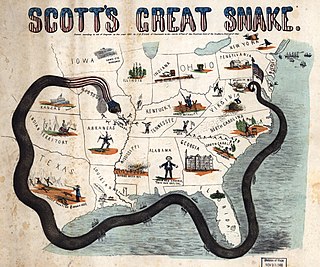 W
WThe Lower Seaboard Theater of the American Civil War encompassed major military and naval operations that occurred near the coastal areas of the Southeastern United States: in Alabama, Florida, Louisiana, Mississippi, South Carolina, and Texas) as well as southern part of the Mississippi River.
 W
W"Marching Through Georgia" is a marching song written by Henry Clay Work at the end of the American Civil War in 1865. The title and lyrics of the song refer to U.S. Army major general William T. Sherman's "March to the Sea" to capture the Confederate city of Savannah, Georgia in late 1864.
 W
WCSS Muscogee was an casemate ironclad built for the Confederate States Navy during the American Civil War in Columbus, Georgia. Her original paddle configuration was judged unsuccessful when she could not be launched on the first attempt in 1864 and she had to be rebuilt to use propellers. Later renamed CSS Jackson and armed with four 7-inch (178 mm) and two 6.4-inch (163 mm) guns, she was captured while still fitting out and was set on fire by Union troops in April 1865. Her wreck was salvaged in 1962–1963 and turned over to the National Civil War Naval Museum in Columbus for display. The ironclad's remains were listed on the National Register of Historic Places in 1970.
 W
WPickett's Mill Battlefield Site is a Georgia state park in Paulding County, Georgia that preserves the American Civil War battlefield of the Battle of Pickett's Mill. The 765-acre site includes roads used by Union and Confederate troops, earthwork battlements, and an 1800s era pioneer cabin. The area's ravine is a site where hundreds died. The park's visitor center includes exhibits and a film about the battle.
 W
WPine Mountain is a natural geographical feature located in Cobb County, Georgia, near the town of Kennesaw.
 W
WSherman's neckties were a railway-destruction tactic used in the American Civil War. Named after Maj. Gen. William Tecumseh Sherman of the Union Army, Sherman's neckties were railway rails destroyed by heating them until they were malleable and twisting them into loops resembling neckties, often around trees. Since the Confederacy had limited supplies of iron, and few foundries to roll the rails, this destruction was very difficult to repair. They were also called Sherman's bow ties or Sherman's hairpins.
 W
WSpecial Field Orders, No. 15 were military orders issued during the American Civil War, on January 16, 1865, by General William Tecumseh Sherman, commander of the Military Division of the Mississippi of the United States Army. They provided for the confiscation of 400,000 acres (1,600 km2) of land along the Atlantic coast of South Carolina, Georgia, and Florida and the dividing of it into parcels of not more than 40 acres (0.16 km2), on which were to be settled approximately 18,000 formerly enslaved families and other black people then living in the area.
 W
WWestern & Atlantic Railroad #49 "Texas" is a 4-4-0 "American" type steam locomotive built in 1856 for the Western & Atlantic Railroad by Danforth, Cooke & Co., best known as the principal pursuit engine in the Great Locomotive Chase, chasing the General after the latter was stolen by Union saboteurs in an attempt to ruin the Confederate rail system during the American Civil War. The locomotive is preserved at the Atlanta History Center.
 W
WThe Western & Atlantic Railroad of the State of Georgia (W&A) is a government-owned railroad and is currently leased by CSX, which CSX operates in the Southeastern United States from Atlanta, Georgia, to Chattanooga, Tennessee.
 W
WThe Western Theater of the American Civil War encompassed major military operations in the states of Alabama, Georgia, Florida, Mississippi, North Carolina, Kentucky, South Carolina and Tennessee, as well as Louisiana east of the Mississippi River. Operations on the coasts of these states, except for Mobile Bay, are considered part of the Lower Seaboard Theater. Most other operations east of the Mississippi are part of the Eastern Theater. Operations west of the Mississippi River took place in the Trans-Mississippi Theater.
 W
WHeinrich Hartmann Wirz, better known as Henry Wirz, was a Swiss-American officer of the Confederate Army during the American Civil War. Wirz was the commandant of the stockade of Camp Sumter, a Confederate prisoner-of-war camp near Andersonville, Georgia, where inhumane conditions led to a high mortality rate of Union detainees. After the war, Wirz was tried and executed for conspiracy and murder relating to his command of the camp.
 W
WYonah was a type 4-4-0 steam locomotive that participated in the Great Locomotive Chase of the American Civil War.